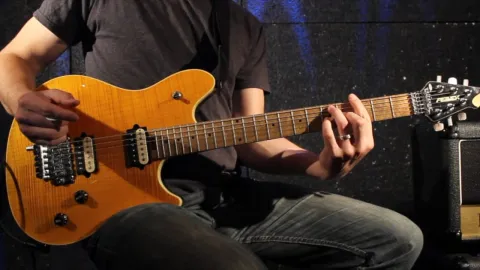Dominant Chord Unleashed

Dominant Chord Unleashed
The dominant chord is the most powerful chord in music. Its perfect blend of a major triad with a diminished triad gives us a “tri-tone” interval between the 3rd and b7th, which is just the right combination of major and minor tonalities.
Because of its signature sound, it is very versatile and can be used in a variety of ways to give your progressions more color.
Dominant chords can either be static, functioning, or non-functioning.
Static dominant chords are dominant chords that are heard as the I chord.
For example, in an E blues, the I chord is E7. This is considered static because is is heard as the "home base" or the tonal center of the progression.
Functioning dominant chords do exactly that: resolve the tri-tone interval between the 3rd and b7th. Any dominant chord that resolves down a 5th or up a 4th to a major, minor, or other dominant chord is functioning. For example: E7 to A.
It is important to note that while we generally view a functioning dominant chord as a V7 chord, e.g., V7 - I, we can have functioning dominant chords that resolve to chords other than the I:
These are called secondary dominants.
Secondary dominants temporarily change the key to imply resolution to other chords.
As long as the dominant chord resolves up a 4th or down a 5th it is functioning. For example: take the progression of C D7 G7 C. Normally, we have a IImi chord in a major progression, but we have changed it to a II7 chord to make the pull to G7 stronger. Since D is a 5th above G, the Dominant chord is functioning. When writing this, we write V7/V or "five of five." We can have secondary dominants resolve to any scale degree, not just the V7.
But, for example, if we had the progression: C A7 Dmi G7, we would write I, V7/IImi, IImi, V7.
This is because the A7 is really a secondary dominant, or V7, of two or IImi.
Non-functioning dominants are exactly that: non-functioning.
Essentially, if you have a dominant chord in a progression that does not resolve, it is just there to achieve that dominant "sound" and not for its resolution. For example: in the progression C E7 F7 G7 - only the G7 is functioning.
The E7 and F7have been changed to get that "sound." And, I might add, It's a very cool sound.
So go ahead and mess around with dominant chords. Make progressions using all three kinds. Have some fun with it. You should find that you can make dominant chords work virtually anywhere if you surround them in the right way.